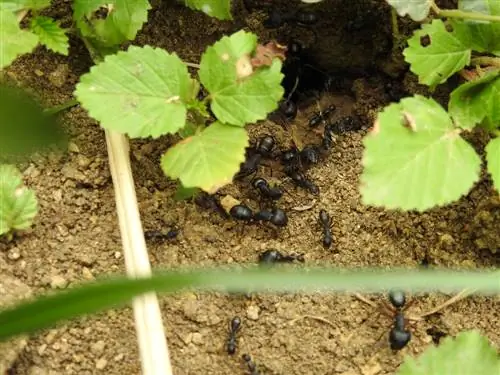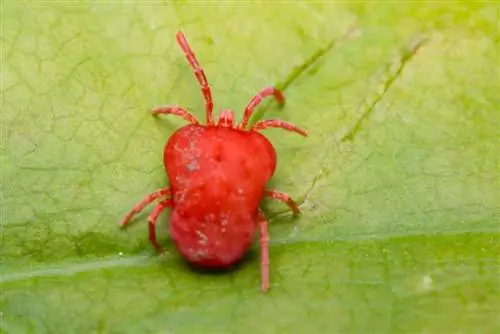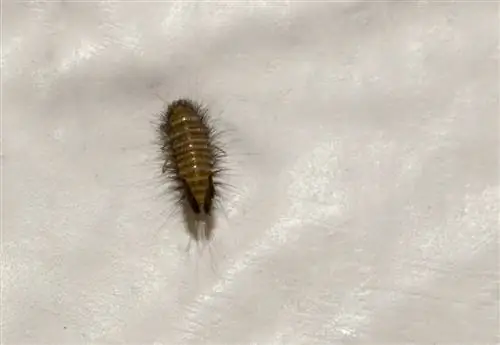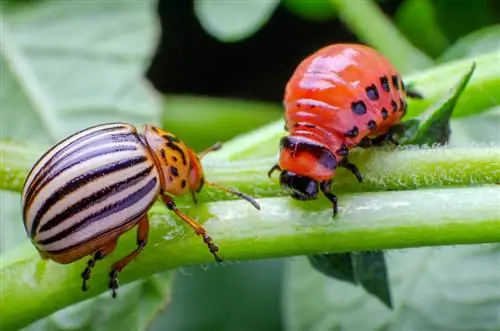- Author admin [email protected].
- Public 2023-12-16 16:46.
- Last modified 2025-01-23 11:22.
The rose beetle subfamily contains around 3,000 species that are distributed worldwide. They are characterized by unusual colors and patterns. While numerous exotic species are used as animal feed, the native rose beetle enjoys a protected existence.
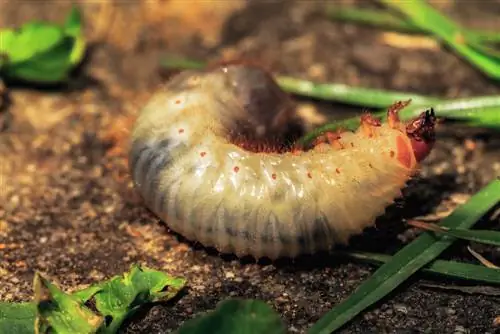
Why are rose beetle larvae useful?
Rose beetle larvae are useful helpers in the garden that decompose organic waste and serve as protein-rich food for reptiles and amphibians. The larvae of the native golden rose beetle are not harmful and should be protected, not controlled.
Breeding rose chafer larvae
The larvae of various rose beetles are suitable as food for amphibians and reptiles, which is why the insects are often bred by owners of exotic animals. The larvae reach a body length of four centimeters and are about the thickness of a finger. As a comparatively large food animal, the rose beetle larva offers a protein-rich energy source for large reptiles. They can be fed to weakened animals or pregnant females. The insect larvae are a popular fishing bait for anglers.
Which rose beetles are suitable for breeding?
Many rose beetles do not have any special demands on the habitat, which is why breeding them is suitable for beginners. Like its African relatives, the Congo rose beetle prefers a dry, hot climate, while Asian specimens live in warm, humid climates. Rose beetles can be grown in a well-ventilated box filled with substrate. All species are soil-dwelling and lay their eggs in the substrate.

| Appearance | Origin | suitable for | |
|---|---|---|---|
| Chlorocala africana | variably colored, always shiny metallic | Africa | Beginners |
| Dicronorhina derbyana | red-green iridescent, white stripes | Sahara | Beginners |
| Pachnoda marginata | orange yellow, reddish brown or yellow edged | Congo | Beginners |
| Argyrophegges kolbei | white with variable black pattern | Africa | Experienced |
Substrate
Most rose beetles live in a soil mixture of 80 percent deciduous forest humus and 20 percent rotten leaves. While the substrate for African species is kept dry, you should ensure that the environment for Asian rose beetles is sufficiently moist. Mix about 20 percent of rotting wood into the substrate and moisten the soil regularly.
- Humidity: 60 to 80 percent
- Temperature: 18 to 28 degrees Celsius
- Substrate height: 15 to 20 centimeters
Development

Rose beetles remain in their larval stage for three months
African rose beetle larvae hatch after about three to four weeks. They live in sludge and protein-rich wood, which is decomposed by fungi and microorganisms. Rose beetle larvae show typical behavior when disturbed, which is why they should be left alone. They roll onto their backs and move pulsatingly.
Occasional feeding and regulating living conditions are recommended. The larvae pupate three months after hatching. During this time they are so big that they can no longer be overlooked. It takes about five months for an egg to become an adult beetle.
Feeding the larvae:
- Place blossoms of fruit trees, nasturtiums, dandelions or clover on the substrate
- Refresh the leaf layer regularly
- offer white rotten pieces of wood
Buy rose beetle larvae
If you don't have the opportunity to breed, you can buy rose beetle larvae. You should pay attention to the exact origin and living conditions of the beetles so that you get high-quality goods. The larvae are said to provide a nutritious food source for reptiles and amphibians, which is why the he alth of rose beetles is important.
What you should pay attention to when buying:
- Determine age and height
- Three-month-old larvae are about to pupate
- Better to buy younger larvae and breed them before feeding them
- Avoid long shipping routes
Can I fight rose beetle larvae?
From the subfamily Cetoniinae, the golden rose beetle is a species native to Germany. It has the scientific name Cetonia aurata and is a protected species. If ornamental shrubs are infested with rose beetles, only gentle and non-lethal measures may be used.
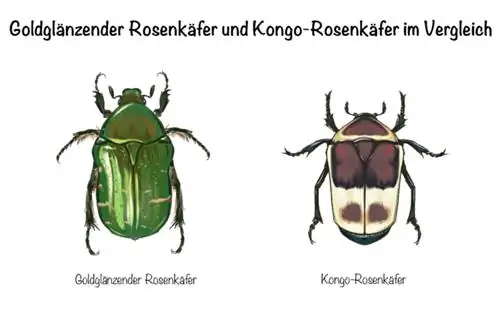
Collect beetles
Adult beetles feed on pollen, delicate flower parts and sweet plant juices. Collect the beetles from the flowers in the early morning hours. The cool temperatures make the insects almost unable to move. They stay on the food plant until it gets warmer. Place the beetles on alternative food plants. The rose beetle finds an ideal habitat in structured open landscapes with dry slopes or quarries as well as in bushy meadows.
Preferred food plants:
- Ornamental shrubs: roses, viburnum
- Wild fruit: elderberry, hawthorn
- Herbaceous plants: Umbelliferous plants
The golden rose beetle is neither poisonous nor can it bite. No special precautions are necessary when collecting.
Are rose beetle larvae harmful?
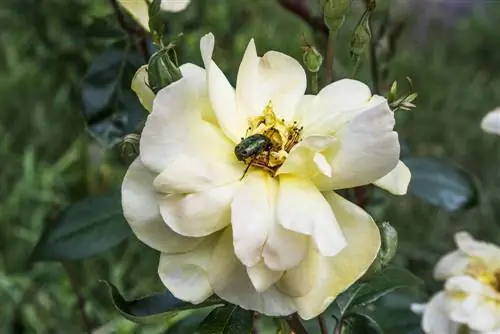
Rose beetle larvae do not eat plants, but adult beetles do
Unlike similar grubs, the larvae of the native rose beetle are not harmful. They do not attack living parts of plants, but rather take on useful tasks in the soil. Since their natural habitats are being lost, the insects are looking for alternative refuges in gardens.
Tip
Golden rose beetles can be recognized by their kneeled antennae and strong legs. Their color ranges from green to blue to violet or bronze.
Excursus
Differentiating rose and cockchafer larvae
If you find a grub, you should place it on a surface. Cockchafer larvae remain in a curved position on their side and try to escape. The rose beetle grubs twist themselves onto their backs and crawl away with pulsating movements while stretching their stubby legs in the air. While the rose beetle grub appears stockier and its front body appears significantly slimmer than its abdomen, the cockchafer larva is uniformly thick.
habitat
The native rose beetles usually live in bushy meadows, on sunny forest edges or in forest clearings. Dry slopes and quarries are valuable habitats for the species, which flies between April and September. It can happen that the iridescent insects settle in the pot or in the raised bed. Females prefer to lay their eggs on soft wood residues from oak, willow or poplar trees. Sawdust or compost substrates also provide welcome egg-laying sites. Occasionally the larvae can be found in the nests of the red wood ant.
Larvae pose no danger
The grubs of the native rose beetle live in rotten wood or in anthills. They are occasionally found in compost. They live in the substrate and feed on organic substances such as dead plant parts and woody debris until they pupate in a cocoon made of wood fibers and substrate particles. The larvae thus prove to be important organisms that are involved in the decomposition of organic remains and act as humus producers.
Adult beetles are rare helpers
The hungry insects not only eat nectar and pollen from flowering plants, but also petals, stamens and pistils. They suck the sweet juices from injured plants and overripe fruits. Nevertheless, the rose beetle does not cause any significant damage to herbaceous plants and woody plants. Since the species has now become rare, it cannot become a plague. They take on important functions as flower pollinators and thus help to achieve a better harvest from fruit trees and berry bushes.
Tip
If a suspected rose beetle destroys or ravages the inside of buds and flowers, it is probably another species such as the small rose beetle. You can recognize him by his thick body hair.
Protecting rose beetles instead of fighting them
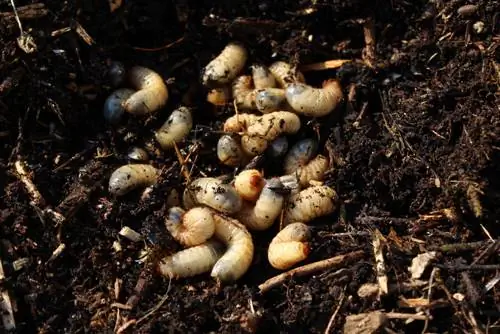
Rose beetle larvae should not be driven away but should be protected
Instead of driving the beetle out of the garden, you should offer the rare and helpful species a habitat. If you remove all dead wood from your garden, you are not only depriving the rose beetle of an important source of life. Numerous other species that have specialized in such ecosystems are being displaced.
Recommendations for a natural garden:
- Pile of brushwood made from clippings
- dead tree stumps
- various rose hedges
- Leaving parts of the garden to their own devices
Frequently asked questions
When do rose beetles hatch?
After the larvae hatch from the egg, they spend the time until they pupate in the substrate. They molt twice and enclose themselves in a thin cover made of sand, earth or pieces of wood in early autumn. The insects overwinter in this pupa until the next spring. Overall, the development cycle takes around two to three years. The adult beetles hatch in April.
What do rose beetles look like?
Adult golden rose beetles are between 14 and 20 millimeters long. The upper side of their body has a variable basic color that can be greenish, bluish, purple or golden. The metallic shine with green to bronze nuances is typical. The beetles are colored red-gold underneath. The cover wings have several white spots and transverse grooves. The white cross band that extends between the rear cover wings is striking.
Can males and females of the common rose beetle be distinguished?
The native species lives on flowers of various ornamental shrubs and fruit trees. When it comes to diet, the genders of the golden rose beetle show no differences. The body characteristics are also similar. Unlike related rose beetle species, males cannot be distinguished from females at first glance. In contrast to their female partners, males have a shallow longitudinal furrow that runs along the side of their abdomen.
Can rose beetles fly?
Like all rose beetles, the native species also has wings that can fly. They are protected by the cover wings and can be pushed out to the side under the wing coverts. The wing coverts remain closed during flight and are not raised, creating a characteristic flight pattern. The metallic sheen of the body is visible during flight, making the insects reminiscent of flying gemstones.


